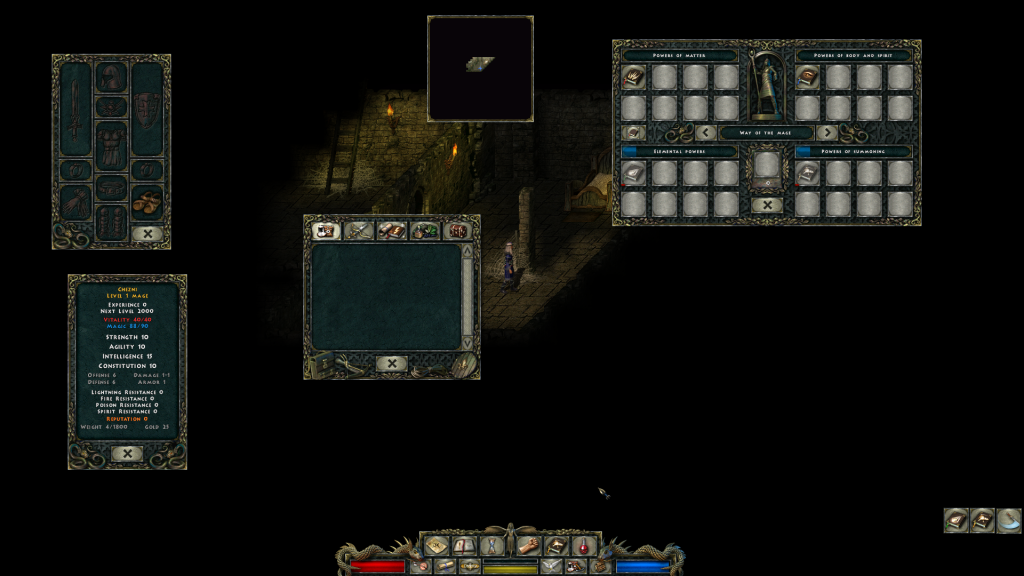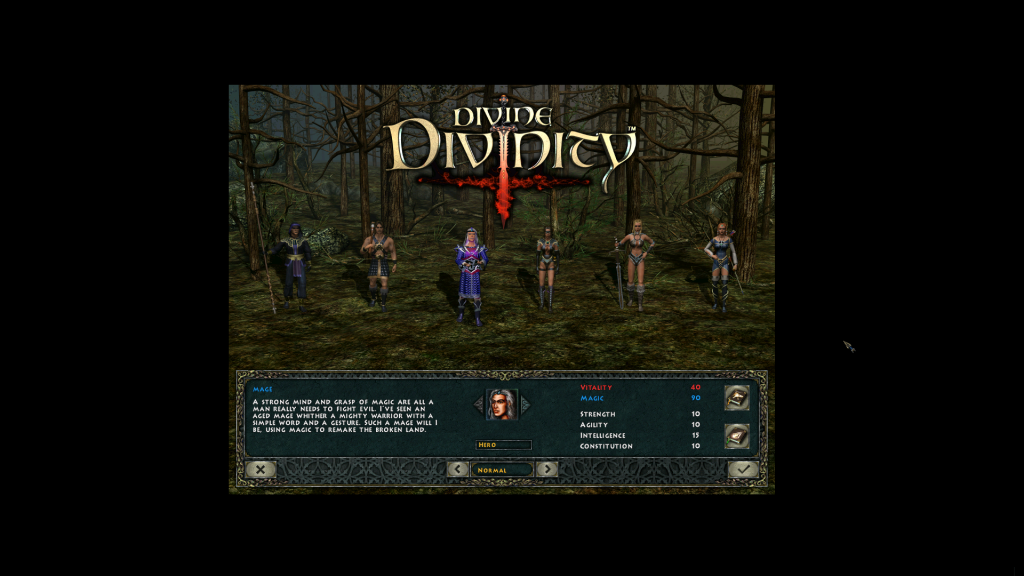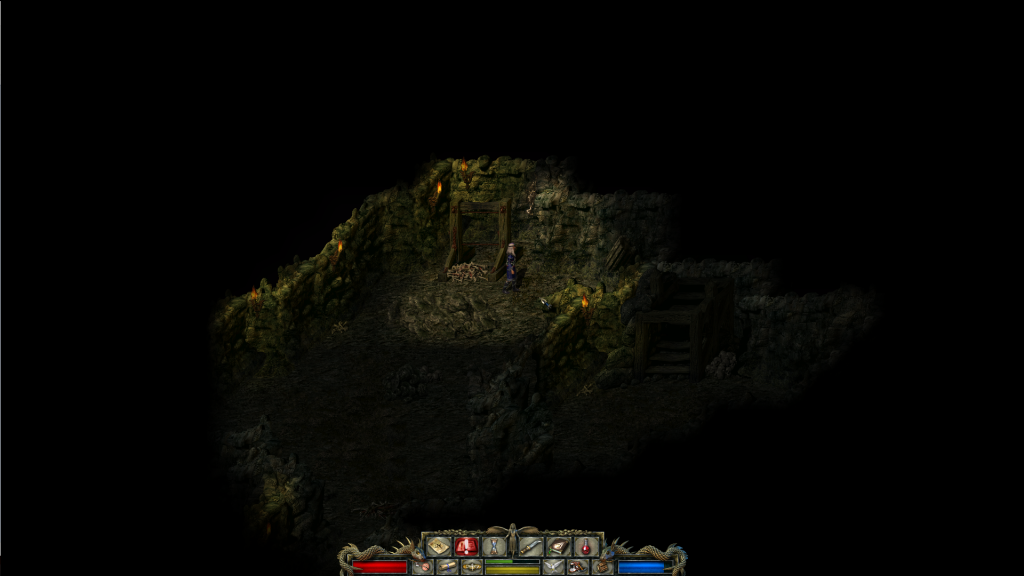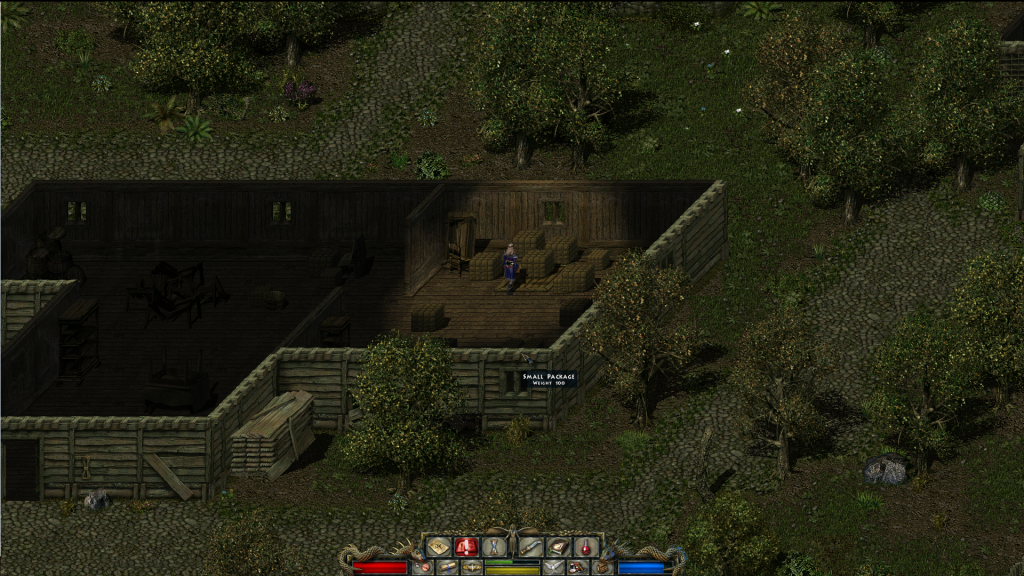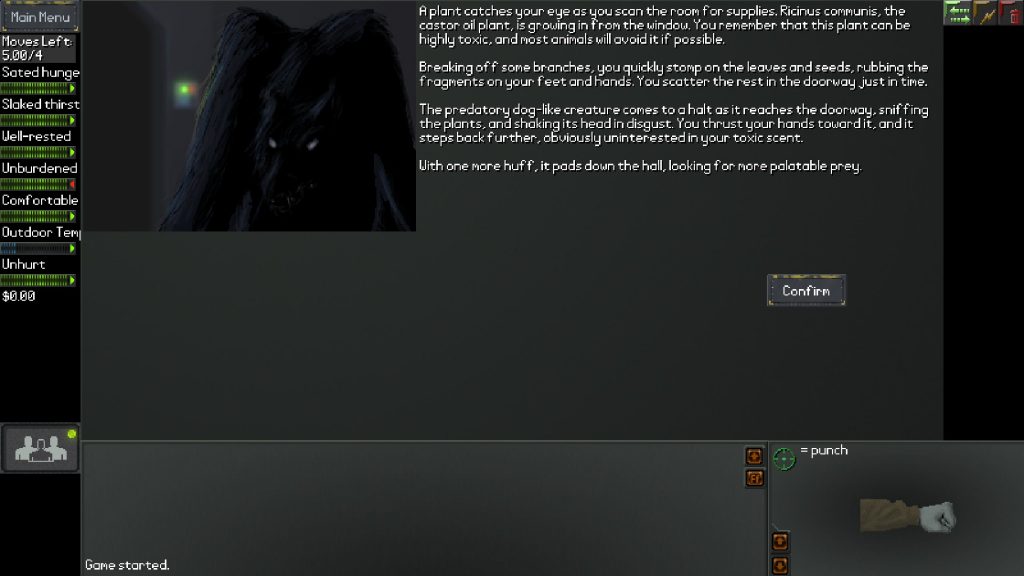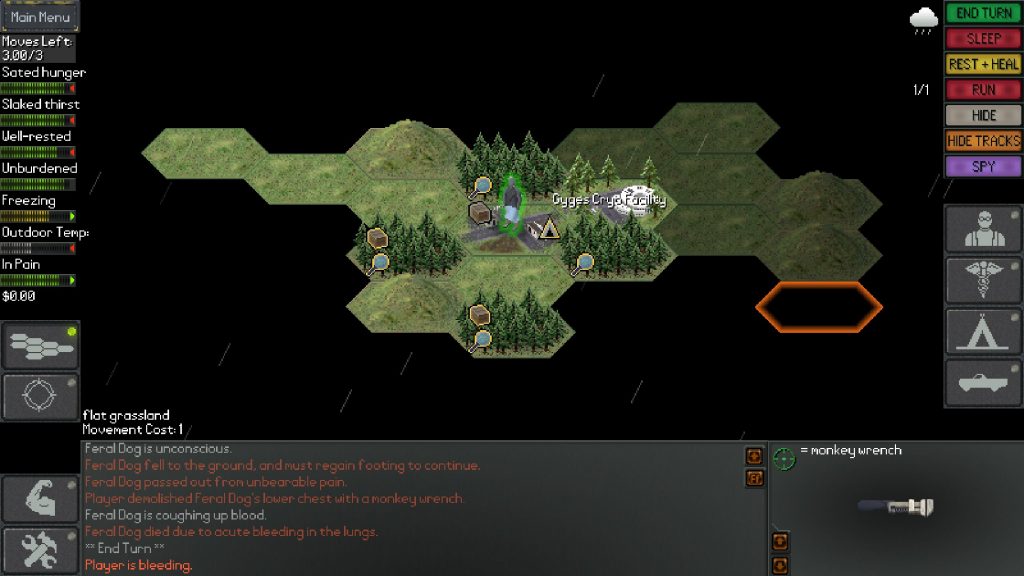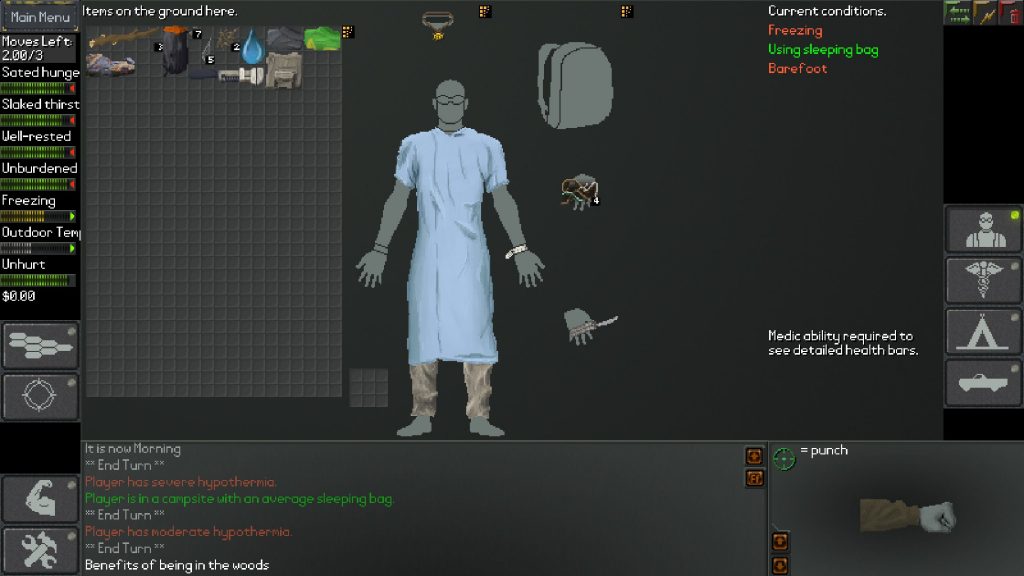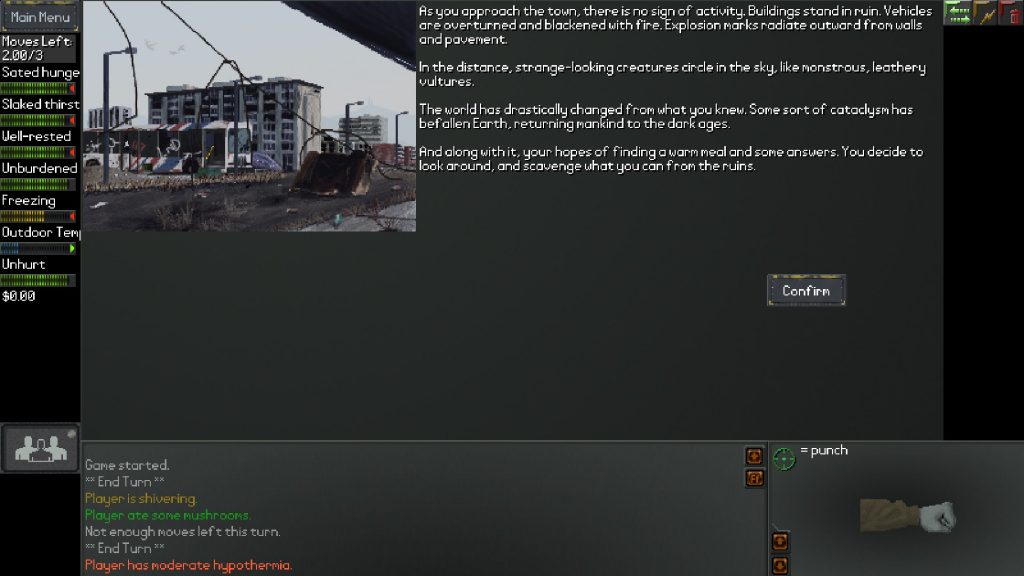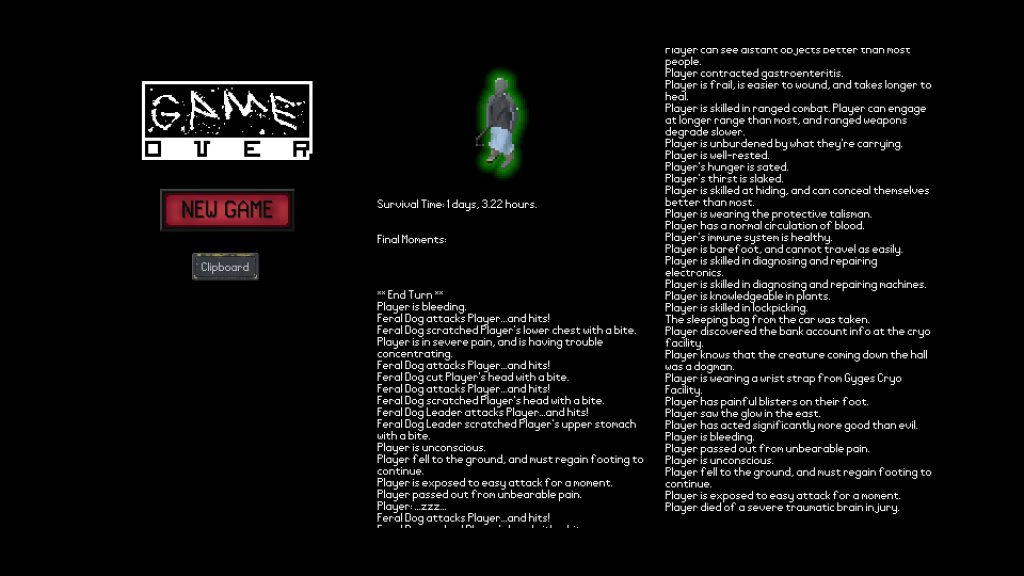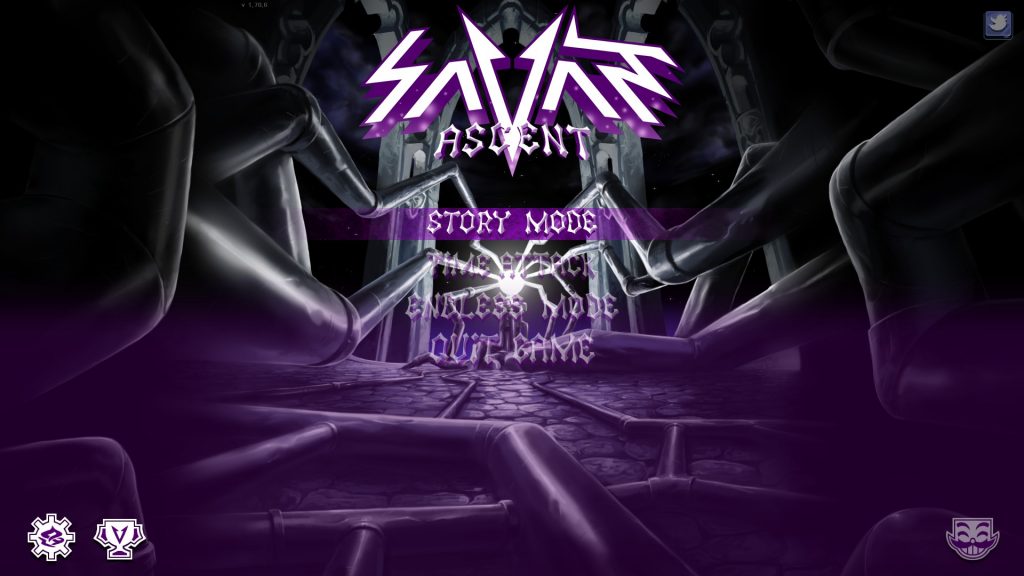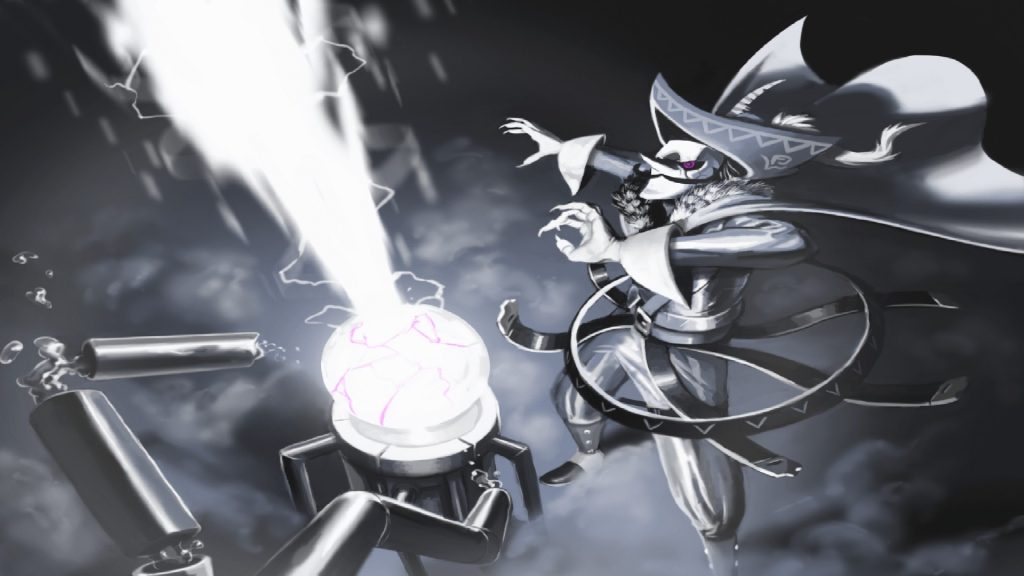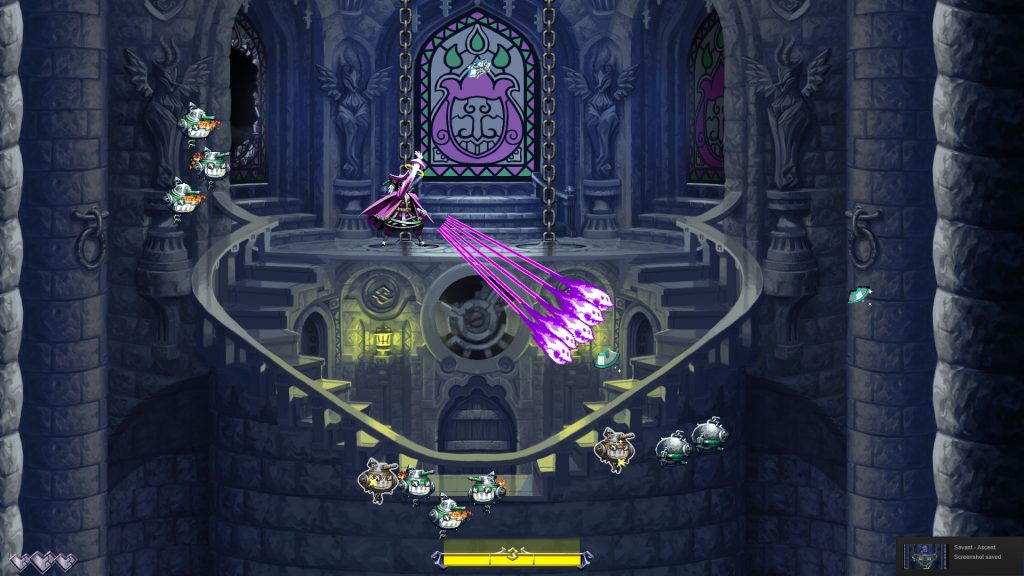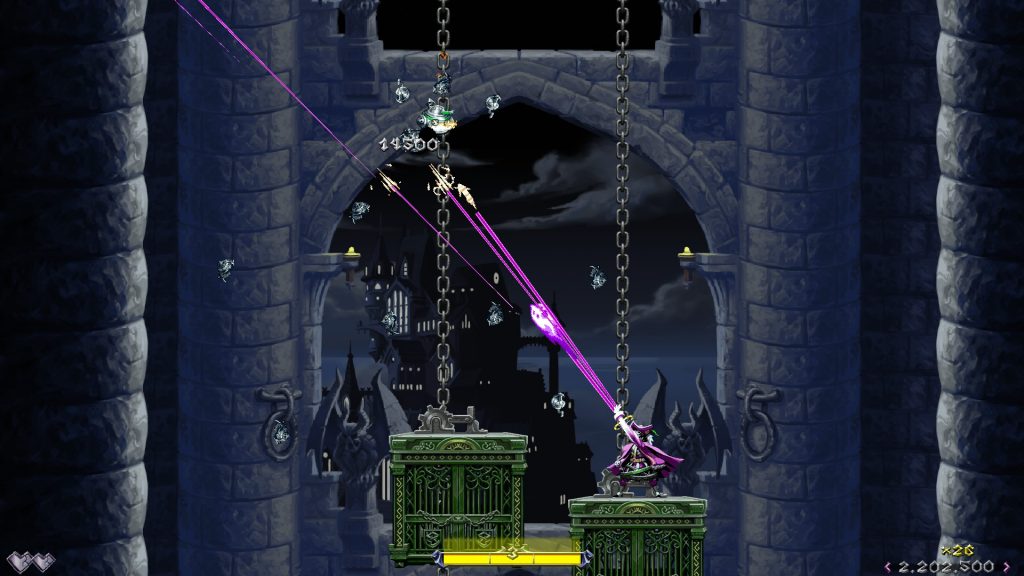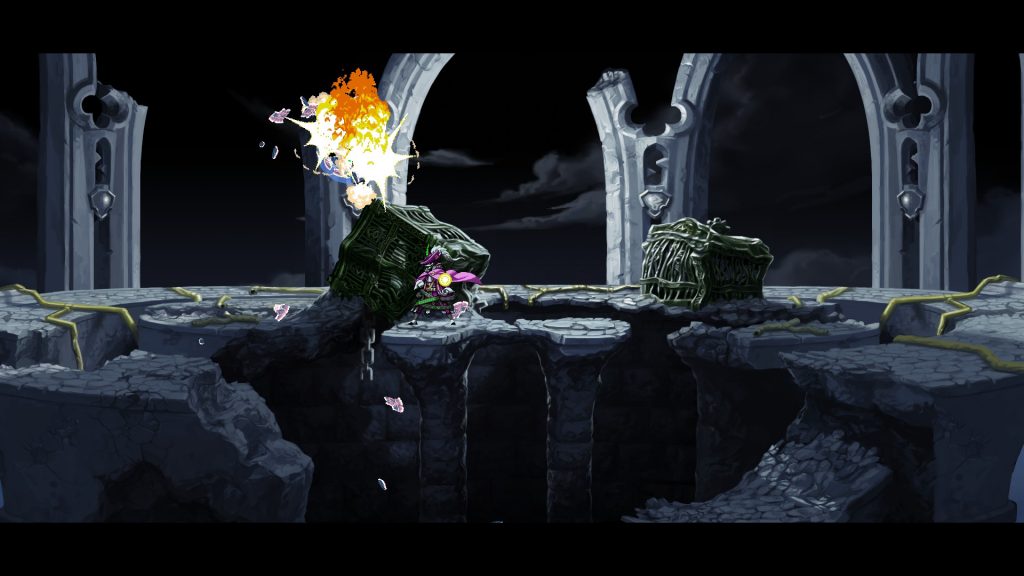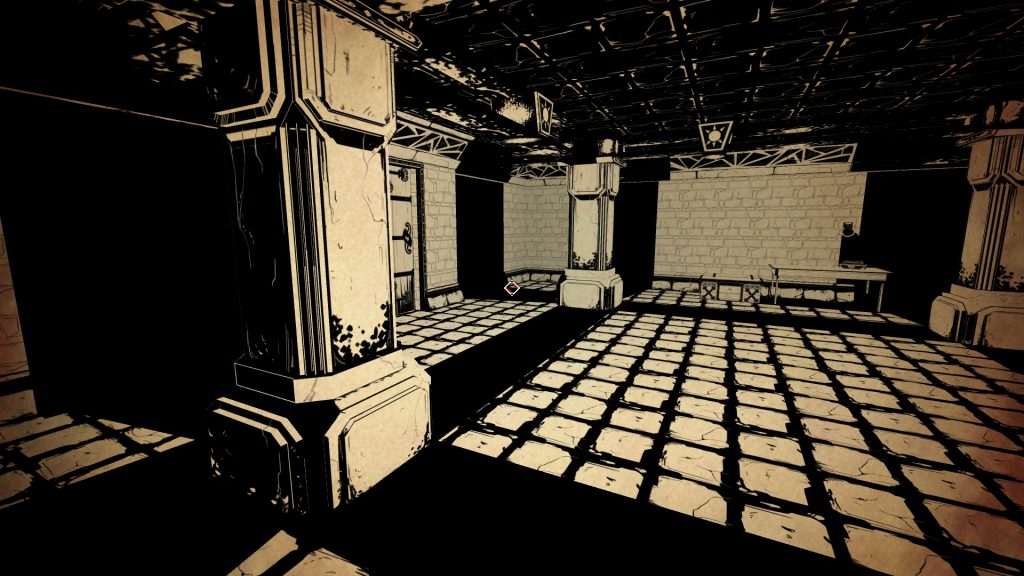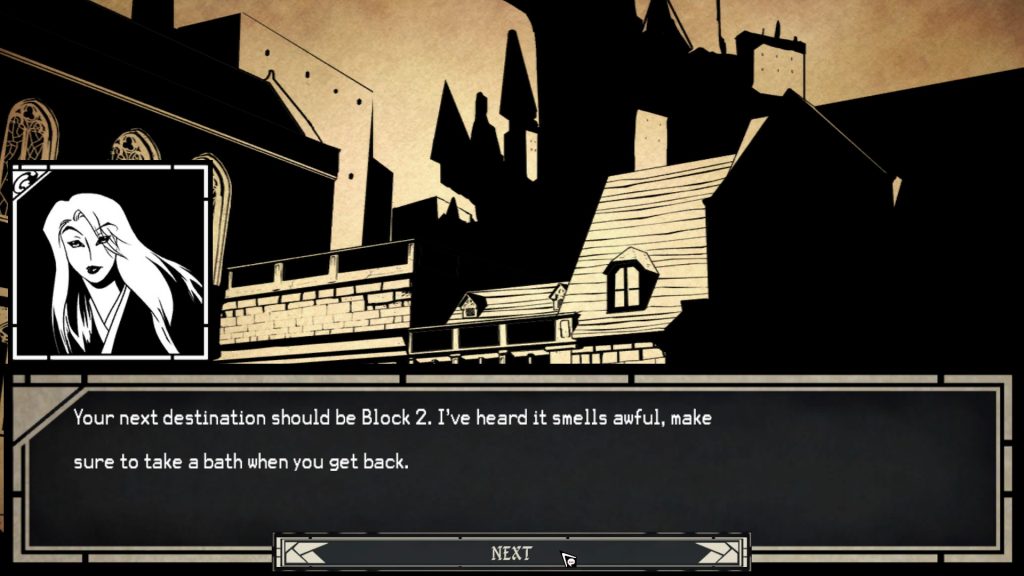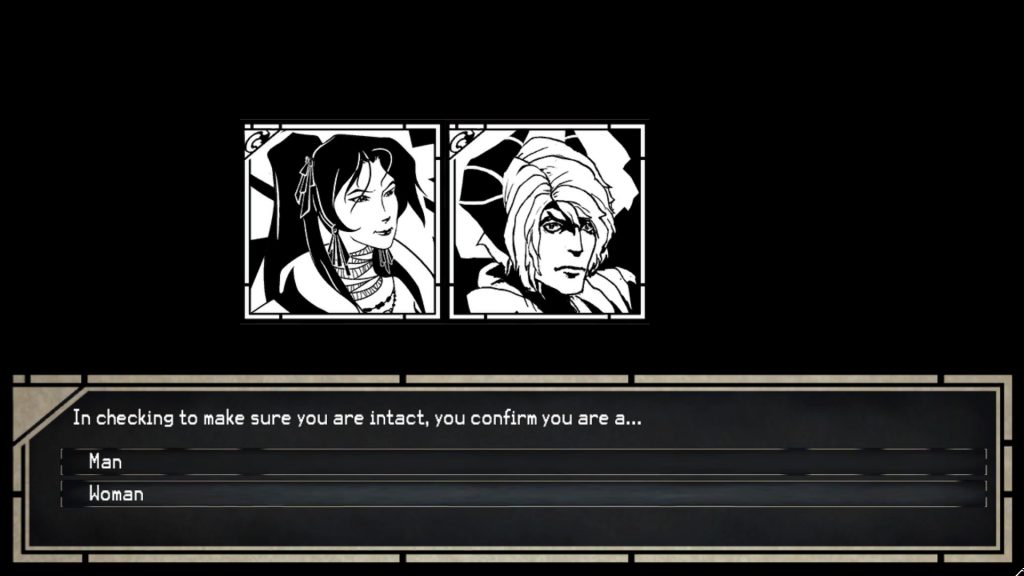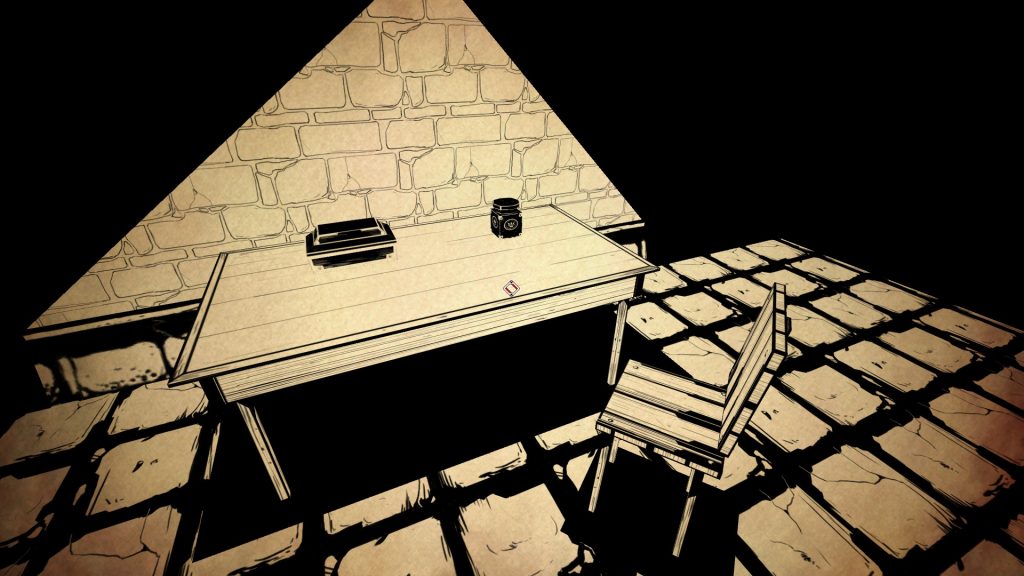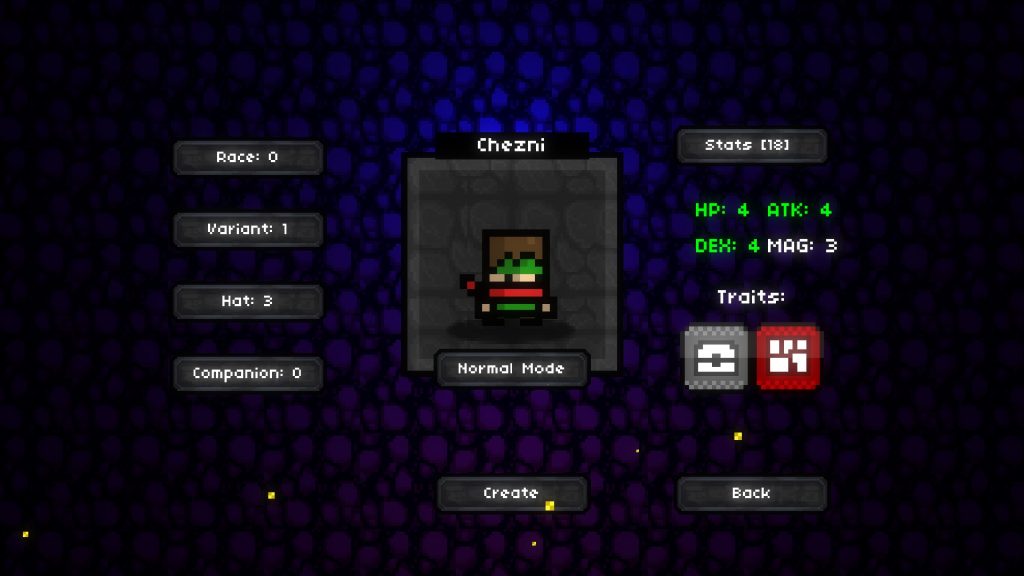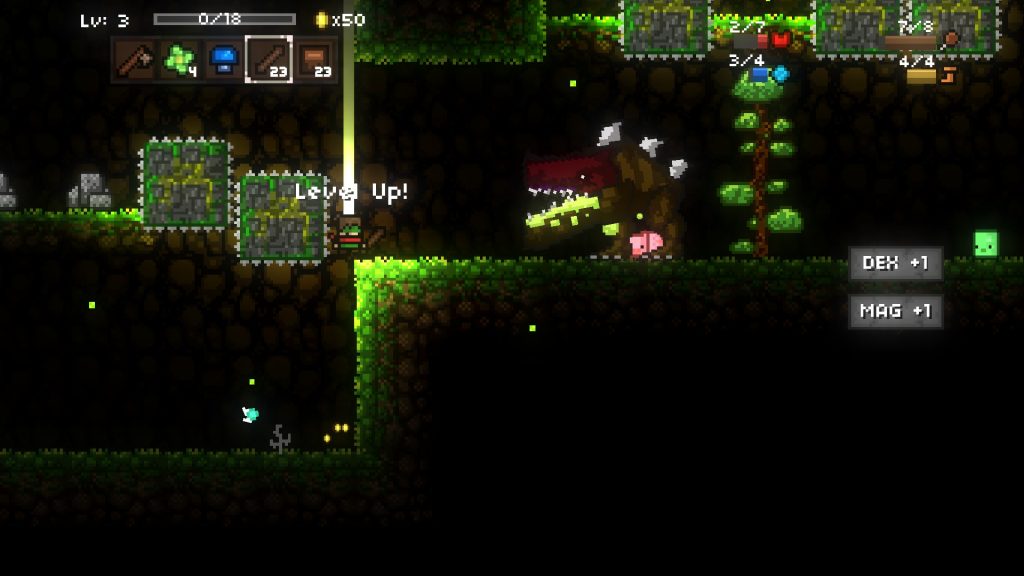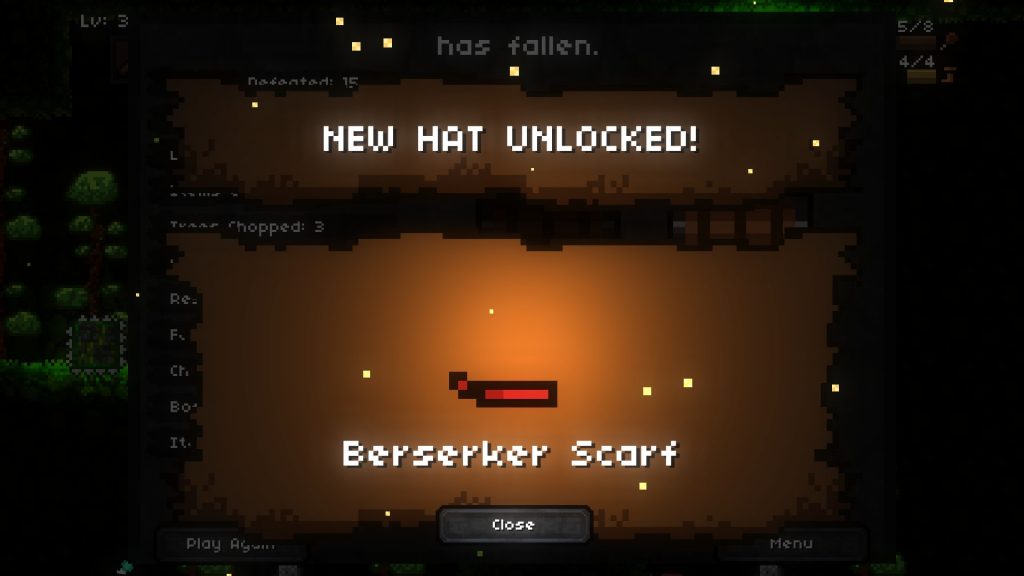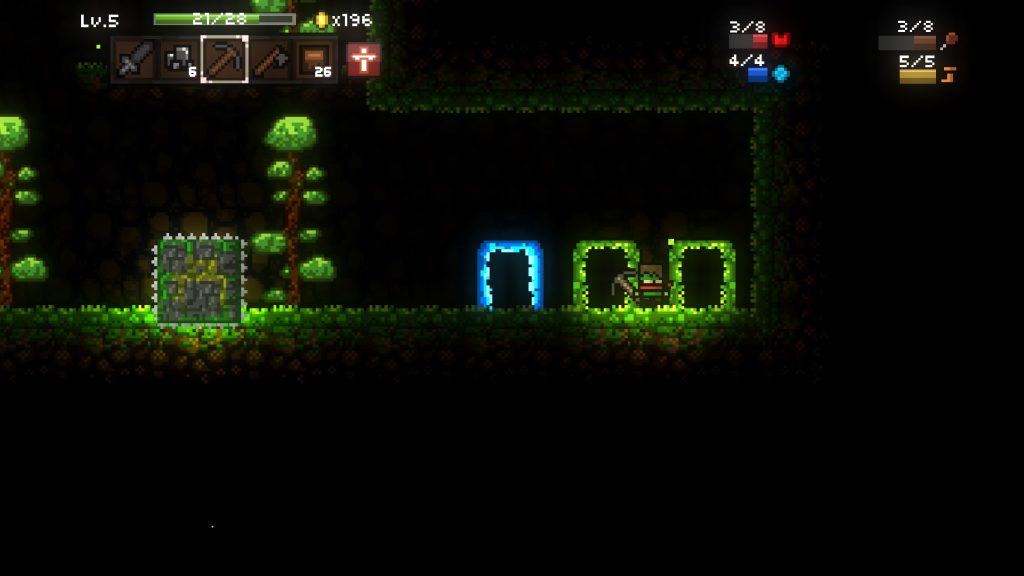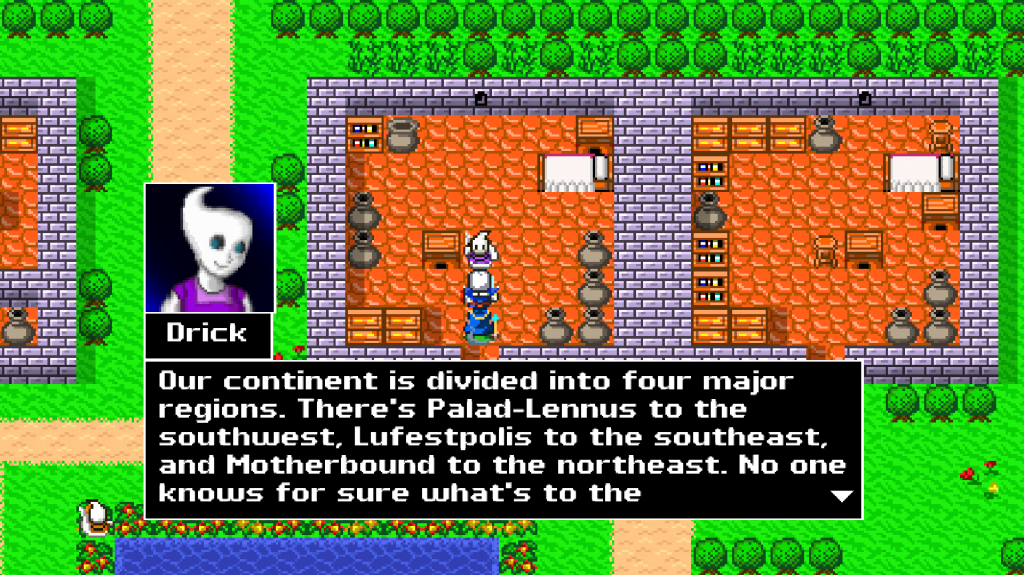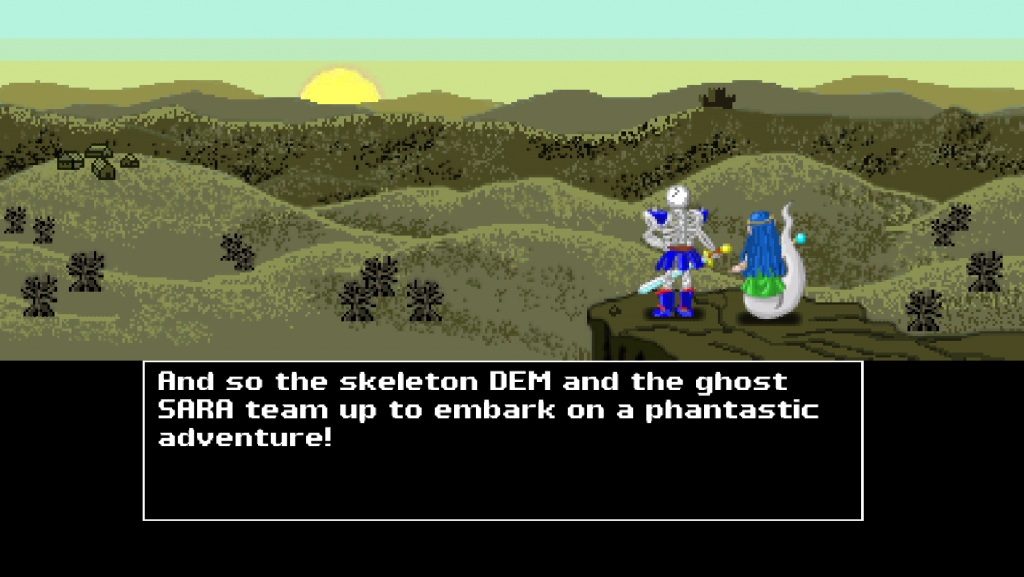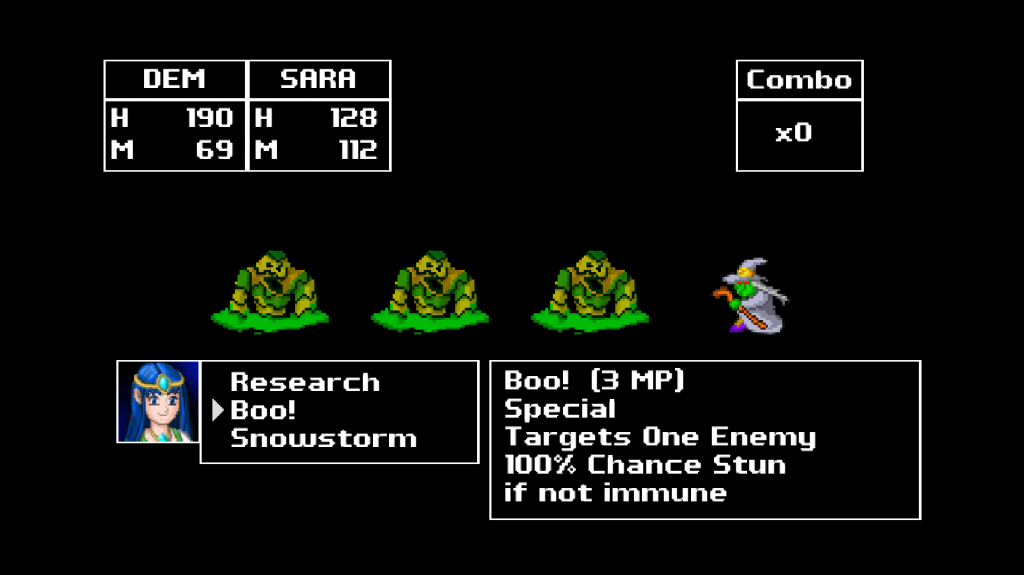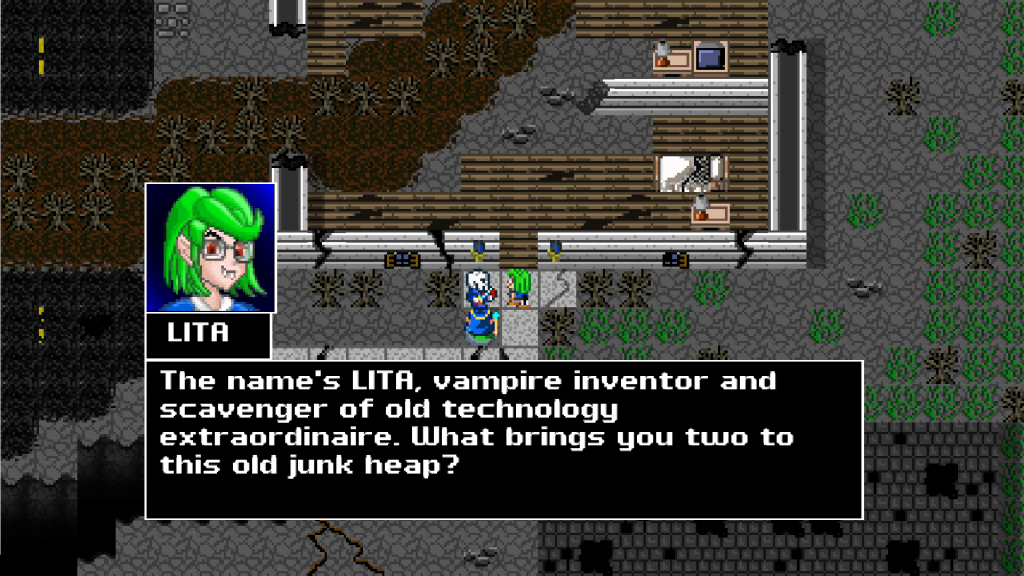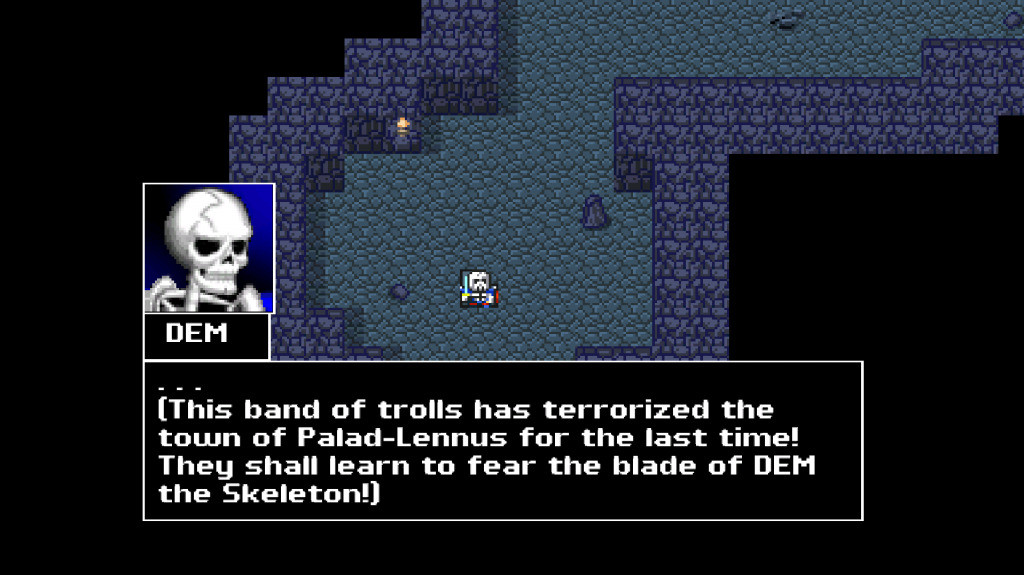At 288 hours (plus quite a bit without an internet connection), Skyrim is the most-played game in my Steam library. It’s also a mess. But while it’s a fun mess, I’m not sure it’s a good game. I’ve spent countless hours finding mods and setting them up just so so everything looks just right (I spent at least three hours finding the right rock textures). I’ve walked back and forth across the whole of Skryim, become the arch-mage, hailed Sithis, raided the library of Hermaeus Mora, and lost myself in the depths of Blackreach. And still I see things that I didn’t know were in the game on /r/Skyrim. It’s remarkable fun to get lost in the world of Skyrim, just wandering about and doing the occasional chore out of your limitless quest log. Once I have some time (and get a good mod order going for the Remastered Edition), I’ll probably spend another few dozen hours doing the same thing. It’s a fun game to do just that, and I haven’t found quite its equal – though I’ve heard good things about The Witcher 3. Now, let’s start in on the latest in my series of “Why did I write this much, and why didn’t I get some screenshots to break it up?”
Wide as an Ocean, Deep as a Puddle
You’ve probably seen that saying somewhere in a review of Skyrim once or twice. But if you haven’t: it refers to how many open-world dungeons, quests, and more there is to explore in Skryim, yet so little that really draws you in as a roleplayer. On the whole, it provides an immersive experience because so many different things interact – but each piece individually isn’t particularly enthralling (with the possible exception of the Serena/Dawnguard questline, and not just because she’s a vampire. Get it? Enthralling? Vampires? No? Stop? okay). I feel a little bad leveling this criticism since I can’t really point to any specific thing that would have fixed it entirely. It’s more a general feeling than anything else; but there are a few specifics I can point out that might help you see what I’m getting at.
The first one is dead simple – and almost a little silly. There are probably about – oh, actually, according to the wiki – exactly 1,089 NPCs in Skryim. Bethesda employed 70 voice actors. That would normally seem like a lot, but as you play the game it really starts to grate that everyone you meet sounds exactly the same. Guard #347 from Riften sounds exactly the same as Guard #209 from Solitude. Sound design is a too-often ignored aspect of games, and the results are on clear display here: there’s a reason sweetroll and arrow memes exist. This problem is compounded by the face-concealing masks worn by every guard in Skryim (though there is a mod to fix that). I mean, come on – it’s rule #1. And where do they all live? Wouldn’t it be more interesting if the guards had lives like the rest of the NPCs?
The next specific feels almost counter-intuitive until you’ve played the game for a couple hundred hours (or, at least, it took me about a hundred). There are many strange, undiscovered places scattered across Skyrim, right? Well, not so much. If you visit the towns, talk to the NPCs, and fill your quest log to overflowing, you’ll start to notice that any place of any significance has a quest associated with it. People lose their axes, are terrorized by trolls, or have heard tales of great treasure coming from every single place in Skyrim. This is not unilaterally bad – some of the quests are truly unique and engaging. The trouble is that Skyrim starts to feel less like a wonder-filled, ancient land where there are countless undiscovered caverns filled with treasure and more like a sequence of quests to be completed. In other words, once you’re told to go explore, it stops being as much fun as having decided to do it yourself. It’s far more fun to stumble upon a cavern that no one knows about, clear it of Draugr, and nab the treasure at the end without anyone having told you to do so. In the end, I just stopped talking to people to feel more like I was actually discovering a place I would stumble across in my journeys. It would be more fun if not all the quests showed up in your log – and not just because you pick up so many quests.
This might seem like a ridiculous complaint, since it only starts occurring to you after so many hours of play, but it ties in to what I think the true purpose of Skryim is: to wander and explore (which is partly why the fast-travel mechanic makes no sense). Those things take many, many hours. The quests should only be there to get you going, teach you the rules, and tell a few interesting stories along the way. The rest of the world should be a vast, unexplored country for you, the player, to discover on your own. It should not be a place where the 400 year old unexplored crypt has fresh food and lighting and a lost axe that you need to recover. Perhaps part of the problem is that there’s a delicate balance for a game developer who wants the player to experience as much as possible while leaving an air of mystery. It’s hard as a content creator to leave things entirely undiscovered, but I think Skyrim would have benefited from more areas that were only hinted at and not quest-related. In fact, I think Skyrim would have been improved if most of the game’s questlines were inaccessible in one playthrough. This, my final specific complaint, is the most immersion-breaking, and it’s immediately obvious: the lack of factioning and player specialization.
Factions and Player Specialization
I’m going to take this chance to talk about a relatively unknown but incredible game – Escape Velocity: Nova – the only game I’ve played that’s successfully made a dynamic faction-based quest system (also, check out those system requirements – 400 MHz Pentium processor, yeah!). In EV:N (and its two predecessors), you only had a random chance at any given quest-line. The Vell-os, a psychokinetic branch of humans, occasionally find your pilot and let them know that they have fabulous secret powers. There is only an 8% chance that any of your pilots will ever get that quest. Additionally, with other quest-lines, you have several chances to defect or switch to a different faction (though explaining this was occasionally done poorly). To see what I mean, just check out a page or two from this walkthrough. Though it wasn’t always done perfectly, it made the game feel like your own and made each pilot you create feel like their own person. It was great. It felt good.
Fast forward from EV:N nine years, and an incredibly ambitious game called Skyrim comes out. But in Skyrim, you can be the Archmage of Winterhold, the Listener of the Dark Brotherhood, the Dragonborn, Harbinger of the Companions, Master of the Thieves Guild, Champion of Every Daedric Prince, and a dozen other things. At the same time. Every time. In fact, unless you never visit Riften or can stand to have unfinished quests, you are practically forced to become a member of the Thieves’ Guild. Your character just becomes the most powerful (wo)man in all of Skyrim without even trying. I could understand that for the main Dragonborn plot, but it just doesn’t make sense for all the rest. Wouldn’t it be better to introduce these sidequests based on what your character actually does in the game? If you level up magic, wizards start asking about you. If you pickpocket enough people and get caught, the Thieves’ Guild might bail you out and offer you a job. If you do enough of those “take care of so-and-so” jobs, the Dark Brotherhood starts investigating (though that one is close to what actually happens). Instead, Skyrim doesn’t care if you are the Thane of every hold, but also happen to be a notorious Thief. Instead, Skyrim was designed with two design assumptions that make it both initially fun and a long-term mess.
Skyrim never asks the player to make sacrifices. You can be the hero of all Skryim and Solstheim. You might wonder how anything got done before you showed up. You can fight legendary dragons off three at a time and not even break a sweat. I understand that Skyrim wanted to make it possible for a player to just jump in to the game and not have to go through a tedious character creation (well, minus the requisite three and a half hours of facial feature adjustments). But they could still have accomplished that without letting the player become so unreasonably all-powerful. There should be a point where you have to decide to make some sort of sacrifice – some sort of trade-off. It’s only when you are forced to stay within the limits of a system that growth can occur. From a mechanical standpoint, I’m not saying that you should not be able to become an effective swordsman, archer, and mage at the same time – just that being the best swordsman, archer, and mage of all time is unreasonable. There should be a point where you might primarily fight things with your fire magic because it has a good DPS rate. But when things get real, you pull out your unreasonably-sized claymore, throw a quick enchant on it, and go to town. From a lore standpoint, if I can just cure my vampirism with fifteen minutes of running around (if I don’t fast-travel), then it isn’t a very meaningful choice to become a vampire. You may have to kill someone to cure it, but that’s barely an issue when bandits attack you at every opportunity.
In Skyrim, you are never asked to make moral choices. Well… you are, but if you think they actually mean anything then you’d be wrong. In the end, there are no true consequences for your actions. When I first picked up Skyrim – oh so long ago – I was asked to find a fugitive and bring them out of the city for justice. I quicksaved, did the quest, and then reloaded to try the alternate route. I learned that the outcome of this quest is left intentionally ambiguous no matter what you do. As a lone event, it’s a great example of how the correctness of your choice is not always clear. Unfortunately, this single quest becomes the prototype for every moral decision in the game. It doesn’t really matter what you do, since every choice you make is the right one – you’re still going to be the hero. And, I suppose, part of the problem is exactly what I did – quicksaved and tried both to find the best route. What’s the point of making a “bad” route if the player will just reload to get a better outcome? It’s a concession (like fast travel) that isn’t necessarily a good or sensical thing. Any opportunities for moral choice are further undermined by the presence of unkillable NPCs, a lack of any notoriety system beyond a trivial fine, a lack of NPC responsiveness, and a unreasonably linear questing system.
All these things combine to make a sprawling game filled with fascinating places, but a world where none of it captures you for very long. When it does capture you, it sets up a neat experience that really does seem to capture the essence of a fun game – but around every corner is something to take you out of it again. Those things are sometimes cleverly and remarkably hidden, but they are still there to wear you down over a long period of time. The great moments in Skyrim are some of the best in video gaming, but they are too often the exceptions to the tedium of the plot and quests. But enough about that. Let’s move on to something Skyrim did right.
Lore and the True Depth of Skyrim
I have to give Skyrim’s developers credit: an almost unfathomable amount of lore and backstory is scattered around every Elder Scrolls game. Just in Skyrim alone, there are 307 books that do nothing but talk about some piece of lore – not including letters, journals, or books that also increase your skill. There are long, drawn-out conversations on /r/teslore that prove just how incredibly detailed the world-building of the Elder Scrolls is. Beyond that, there are stories hidden throughout the Elder Scrolls games – like a burned-out shack with some journals about a young wizard experimenting with fire magic. In Oblivion, there’s a wizard that falls out of the sky, seemingly at random. But if you loot his body and read his journal, it tells a story of a failed magical flight experiment. That same theme is continued in Skyrim. It’s fantastic, and it is part of what makes faffing about so much fun. Every book and location tells a story that adds to the lore, and I try to read and explore as many as possible – it’s a tradition I started after finding an appropriate mod. There’s a story everywhere waiting to be discovered.
For book nerds (and if you are, ask me about The Night Circus sometime!) or anybody that enjoys immersing themselves in a fictional world, this is certainly part of the draw. For everyone else, this is just another part of the game that can keep you coming back to wander about and have something to do when you are level 120 and have every title available in Skyrim except High King – and only because you assassinated the last one and people tend to frown on that. Not that you couldn’t be the High King, though; everything is possible through mods. Which brings me to the best and worst aspect of Skyrim: modding.
Mods
Mods are the best. Through modding, you can customize literally every aspect of your Skyrim experience. That pillow breaking your immersion? Replace it! A weird bug causing framedrops? Fix it! Want to kill all the children? Mod it! You can even download full-blown DLC or decide that you didn’t actually want to play an Elder Scrolls game after all. Modding games is PC gaming at its best, and in Skyrim this is on full display. But not all of this is a good thing.
Mods are the worst. I’m not complaining that I spent so much time modding – in fact, it’s fun. Mod load order is taken care of as well – through LOOT – and you know a game is the modding king when there are well-designed GUIs for your mod load order tools. What I am complaining about is Bethesda’s reliance on mods. Skyrim is still quite buggy and didn’t look that good until the Special Edition came out…which made it look slightly less good than a simply-modded version and didn’t fix the bugs (though it did move Skyrim to a 64-bit architecture, allowing for NPC craziness). This point has been belabored by many others, so I won’t say more on this topic.
But is it Fun? Is it a Good Game?
I’ve complained a lot about Skyrim. Most of my complaints are, I hope, reasonable. They don’t make Skyrim a bad game – they just make a game that did not live up to its potential. Still, the combat system is simplistic – especially in view of games like Dark Souls. There are no real consequences for your actions, especially when games like Dragon Age exist. There is no option to play the bad guy. The people slated to fight you will always fight you, even after surrendering. Maven Black-briar will never die, no matter how often you kill her. The large-scale “battles” are laughably small due to an outdated engine. Exploration is really Skyrim’s only redeeming mechanic, but even that is dampened by the lack of a truly unexplored world.
It’s certainly a fun game, due in no small part to the remarkable community of players willing to spend time modding things they find need improvement. In fact, there are mods to counter many of the issues I just mentioned. Which brings us to a problem. By itself, Skyrim is a mechanically terrible game. With mods, it is more fun and a better game. Do I judge Skyrim based on what it is or what people have made it? Should a game as open-ended as Skyrim be judged so harshly on its mechanics?
Conclusion
Open-world RPGs are just hard to make. It’s a great deal harder than most people – game developers included – seem to think. I’m fairly sure there has never been a “perfect” open-world game, though I haven’t played The Witcher 3 (and I have hopes for an upcoming one). Skyrim far surpasses many when taken on the whole, but almost any good RPG has elements in which it far surpass Skyrim. And that’s what I think makes Skyrim so hard to judge – it tries to be so many things, but doesn’t really do any of them perfectly. There are few things in life that can do more than a couple things perfectly – that’s why the sentiment of “doing one thing well” is so successful and so many programs that try to do everything fail so spectacularly. It’s why the “perfect” games I can think of are simple ones.
But in the end, Skyrim is fun. You can get lost. And sometimes, that’s enough.
